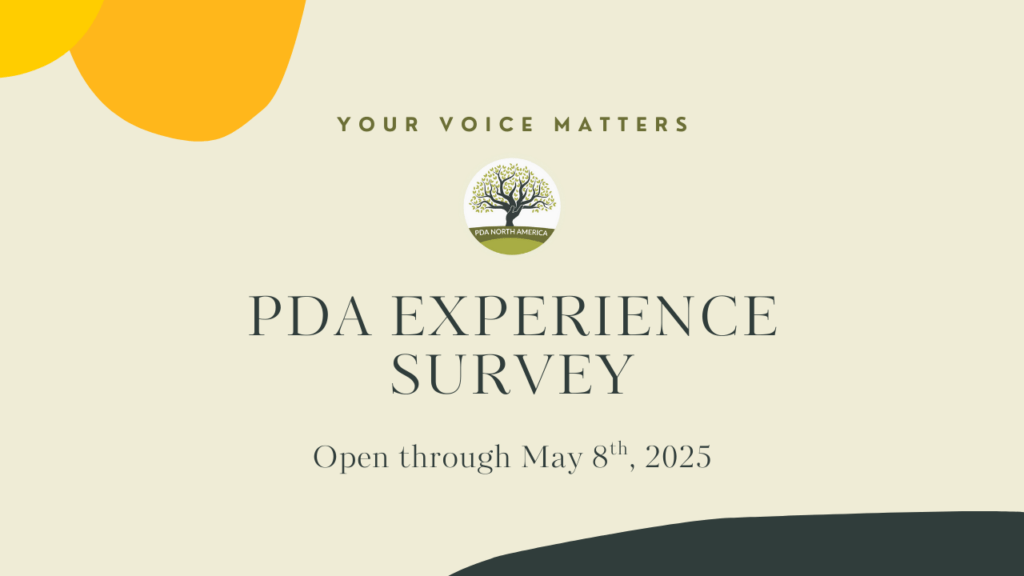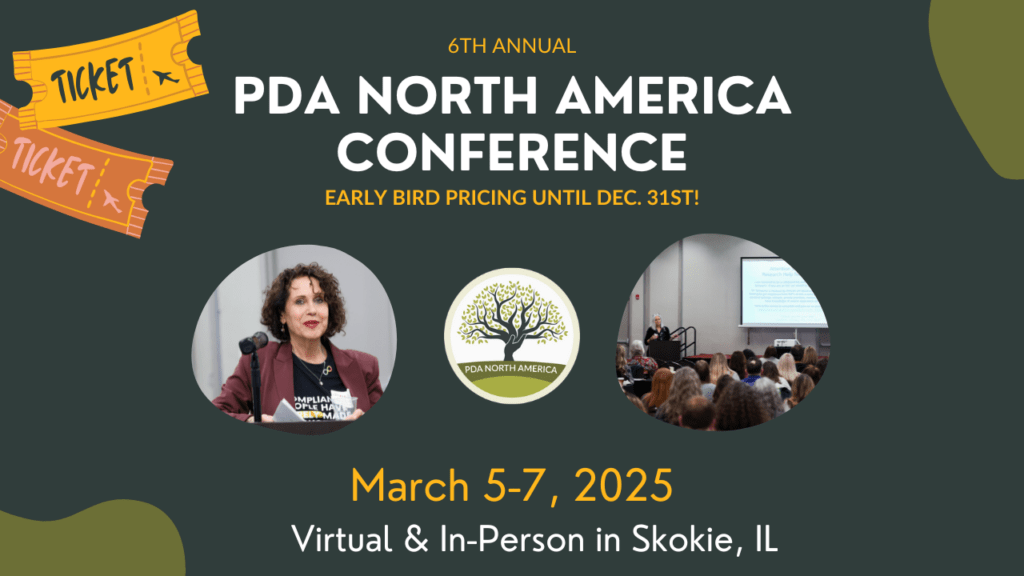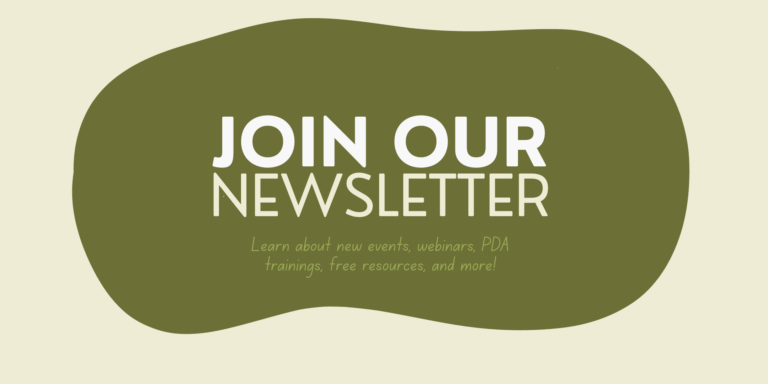Understanding PDA
(Pathological Demand Avoidance/Persistent Drive for Autonomy)
PDA is an acronym that stands for Pathological Demand Avoidance, or as many prefer, Pervasive Drive for Autonomy. PDA was identified in the UK in the 1980s by Elizabeth Newson and has recently received more attention in the US and Canada since PDA North America was established in March 2020. Many view it as a profile of autism, with some recent studies linking it to ADHD as well as other neurodevelopmental conditions. We are hopeful for more high quality, peer-reviewed, unbiased research to better understand PDA.
PDA children and adults avoid everyday demands using ‘social strategies’ as part of the avoidance, have a strong need for autonomy and control, require unique supports and are socially oriented. These highly stress-prone individuals are often not recognized as autistic, are deeply misunderstood and in need of support.
Many families, educators, and therapists are unfamiliar with PDA, and it is often misunderstood or misdiagnosed. Since PDA is not recognized as a distinct diagnosis in the DSM-5 or the ICD-11, many professionals lack awareness or a clear understanding of it. This guide aims to provide a deeper insight into PDA and offer practical strategies for supporting and accommodating individuals who experience it.
We view PDA as a nervous system difference. We believe the strategies outlined in this document can be effective for anyone with a sensitive nervous system, not just PDA individuals.
Understanding PDA Individuals:
The below list is a comprehensive list of traits seen in PDA individuals. Not all will apply to every PDA person.
- High anxiety and a fundamental need for control
- Resisting and avoiding the everyday demands of life like eating, drinking, sleeping, toileting
- Using social strategies as part of everyday avoidance (“My legs don’t work!”)
- Avoidance even of things they like and want to do
- Experiencing changes in mood and impulsivity due to hyper-vigilance, sensitivity, and intensity of emotions
- Lower thresholds of tolerance for everyday tasks/activities
- Appearing sociable but lacking some understanding or skills in navigating situations or relationships
- Rewards and consequences feel like pressure, and generally backfire
- Difficulty complying with requests of others
Understanding PDA Individuals, cont.
- Enjoying pretending and role play
- Not appreciating hierarchy or age differences
- Seeming very interested in social interactions
- Sometimes acting very differently in different environments
- Appearing dominating and controlling, especially when feeling anxious
- Charismatic and engaging when they feel secure and in control
- Seeming callous, but feel deeply but may be oblivious of their impact on others
- Sensory differences
- Lack of Interoceptive awareness
- Obsessive traits (PDAers obsessions are often on people vs. things) and can have strong interests
- May focus on details instead of the big picture, including less important details
- Struggles with emotional regulation anxiety
- Often does not mind eye contact
- Behavior is communication
- Many PDAers have adaptive social skills with blind spots
- Enjoy spontaneity
- Dislike most routine
- Rewards, including praise, can feel threatening
- PDAers can be unorthodox and imaginative
- May have expressive empathy
- Triggers can be both predictable and unpredictable
Things we believe about PDA:
- Not all demand avoidance is PDA
- PDA is currently not a stand-alone diagnosis (Haire, 2024)
- PDA people share similar characteristics but each person is an individual and it’s not a one-size-fits-all approach
- There are internalized & externalized presentations of PDA
- Approaches rooted in behaviorism do not work for most PDAers and can make things worse (time outs, rewards and consequences, etc.)
- PDAers’ sensitive nervous systems can easily go into fight, flight, fawn or freeze states
- PDA individuals frequently ‘mask’ to fit in or feel safe, therefore teachers and professionals can easily miss that they need support, especially in educational or diagnostic settings
- Avoiding demands is not a choice for individuals on the profile. It is a matter of “can’t,” not “won’t”
What's considered a demand for PDA individuals?
Demands in life are everywhere and cumulative. Demands cause stress. Because of this, PDA people have fluctuating capacity. To better understand this, it can be helpful to think about some of the different ‘types’ of demands.
Direct Demands from people can include:
- “Wash your hands”
- “Put away your laundry”
- “Stand up”
- “Start your homework”
Casual Demands:
- “Let’s watch a movie”
- “We need to stop and pick something up for dinner”
- “Let’s go get ice cream now”
- “We need to hurry and leave for the airport”
Demands based on expectation:
- Going on a family outing
- Following the rules of games, sports etc.
- Leaving the house for an appointment, school, etc.
- Homework for school
- Praise – “Great job! You did awesome!” – this can feel like a demand to do just as good the next time and be incapacitating
Internal Demands:
- The need to eat
- The need to use the bathroom
- Illness
- The need to rest/sleep
Self-imposed demands:
Wanting to do a task or activity but not being able to start or complete it due to excitement or personal expectations. This can include things like taking a shower, eating a meal, brushing teeth, reading a book, hobbies, answering a text or talking.
We have found that PDA individuals have highly sensitive nervous systems.
We believe that behavior represents how a person’s nervous system regulates the body’s response to threat. And that PDA individuals have highly sensitive neuroception* that triggers a trauma response to a perceived threat that may not seem apparent to others. Demands and limits to autonomy and control can be perceived by PDA’ers as threats, and can trigger a ‘fight, flight, freeze’ response.
*Dr. Stephen Porges developed the Polyvagal Theory and coined the term “neuroception” which he calls the body’s subconscious surveillance of safety and threat. Some individuals question the validity of the Polyvagal theory. We welcome you to do your own research.
Demand avoidance strategies PDA individuals may use:
- Manipulating social situations to remain in control
- Refusal: “Saying NO,” “I can’t do it,” “You can’t make me”
- Making excuses: “My arms aren’t strong enough!”
- Distraction: “I heard a funny joke today!”
- Arguing
- Negotiating
- Delaying: “I’ll do it later or tomorrow”
- Proposing other options
- Using make believe
Threat Responses you may see in PDA individuals:
- Fight: Defensive verbally or physically
- Flight: Remove themself from the situation, may elope
- Freeze: Shutdown – inability to fight, flight or fawn
- Fawning: Compulsive dominating or submitting (or alternating depending on setting!)
- Fibbing: Compulsive lying, confabulation
- Funster: Compulsive, sometimes inappropriate joking
- Forgetting: Blanking out, disassociating
- Flopping: Fainting, sleeping, “legs don’t work”
- Fantasy: Escapism, maladaptive daydreaming
Supporting PDA Individuals - Respect & Connection are Everything!
- Build trust by offering autonomy when possible
- Realize you must EARN their trust
- Focus on a genuine relationship
- Choose priorities
- Use indirect language including thinking aloud
- Have PDAers plan/decide their own schedule and routines
- Be spontaneous
- Use humor
- Listen to understand
- Collaborate – utilize partnerships
- Share tasks
- Show them you’re equals, not above them
- Realize that stress is cumulative and there’s likely no direct antecedent causing the behavior you’re seeing
- Understand that emotions are contagious! If you are angry, they will be come angry, if you are frustrated they will become frustrated, etc. Remember, it can work with positive emotions (calm, silly, happy) too!
- Co-regulate – lend them your calm nervous system
- Empathize with their intense feelings, but don’t negate their feelings
- Allow PDAers to act in ways they feel most comfortable (don’t push to mask or unmask – i.e. if a child needs to act like a dog to get out the door, let them!)
- Give them the ‘deep why’ behind your actions/needs for them. Help things make sense – they may not be able to act unless it makes sense
- Whatever the ask, it has to be worth the energy and stress
- Help them understand their internal life, thoughts, feelings and sensations
- Teach PDAers how to communicate about themselves and their needs to others
- Don’t pressure PDA people, they have enough pressure on them
- Don’t push your agenda
- Don’t ignore them
- Challenging behavior is only a sign or signal that there is a problem – It is not the problem (ref. Ross Greene)
- Behavioral approaches (including looking for antecedents) don’t work
- PDA individuals seem to go from 0 to 60 in a minute, but often their baseline is 50
- So many times, concerning behavior is caused by their trying to meet our needs and comply such as negotiating
- We can’t always make things better, but we can avoid making things worse
- When supporting a PDA individual, every task has to be worth the stress and energy. You must try to always calculate this, as everything for PDAers has a cost. Is the juice worth the squeeze?!
What NOT to do…
- Don’t give consequences or threaten them
- Don’t worry about holding them accountable
- Don’t lecture or talk too much – less is more
- Don’t dismiss their reality
- Try not to convince them otherwise
- Don’t remind them of rules and expectations
- Don’t express disappointment or shame
- Don’t get stuck on that you are letting them “get away with it”
Use Declarative Language
- Commenting aloud versus giving direct orders
- Sharing observations – “that snow looks cold”
- There is no correct or incorrect response to what is being said



